This common orb-weaving species, transferred to Cyclosa by Dondale in 1966, is not really a Cyclosa. It belongs to a new genus Salsa to which the WA spider Araneus recherchensis also belongs.The group is characterised by a single posterior abdominal tubercle and two longitudinal bands on the underneath. The group is related to Acroaspis and the pustulosa group. This spider is common throughout Australia and occurs in all mainland states and Tasmania. The male body length usually between 3.5 and 5mm, carapace brownish with thick coat of shiny hairs. Eyes circled by black rings. Legs with large spiny hairs, especially on the tibiae. Female body length 7-9mm. Epigynum with short, tapered scape arising from almost flat plate with paired openings. New hatchlings have a black and brownish yellow carapace, pale legs, smooth abdomen with nearly black median pattern resembling that of the adults. The dark area underneath is flanked by pair of distinct white spots. Immature males have slightly swollen palpi. This spider was first described as Epeira f. By Koch in 1872 and then changed to Araneus by Simon in 1895. Dondale reported it as very commonly captured in Australian Capital Territory orchard collections. Fuliginous means dark.
- Female from side
- Epigynum, identical externally to araneus acuminatus
- Female facing
- Female from above
- Female from above, oblique
- Single posterior tubercle
- Female from above
- Female facing
- Female facing closeup
- From above
- References
Female from side

Epigynum, identical externally to araneus acuminatus
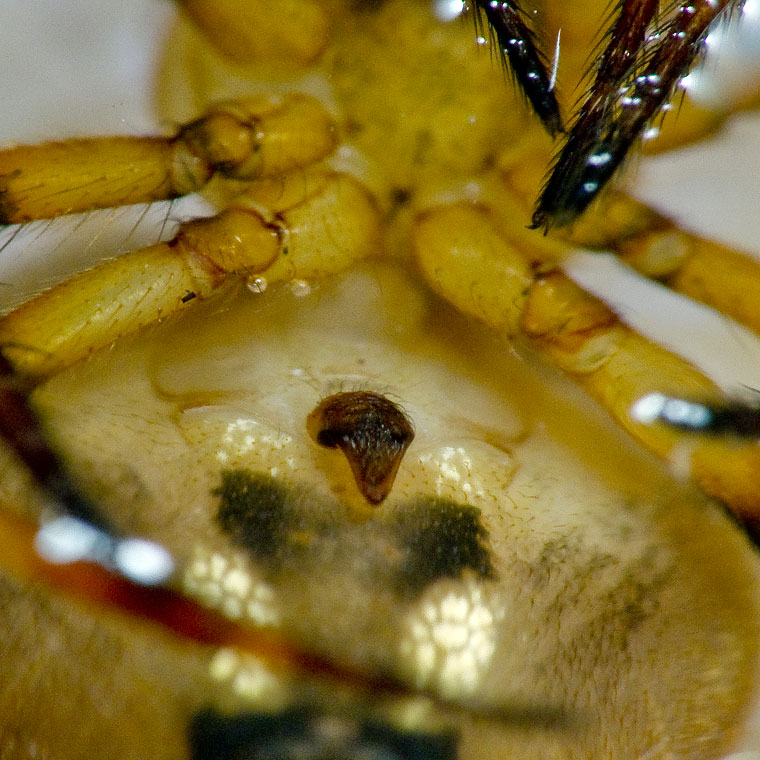
Female facing
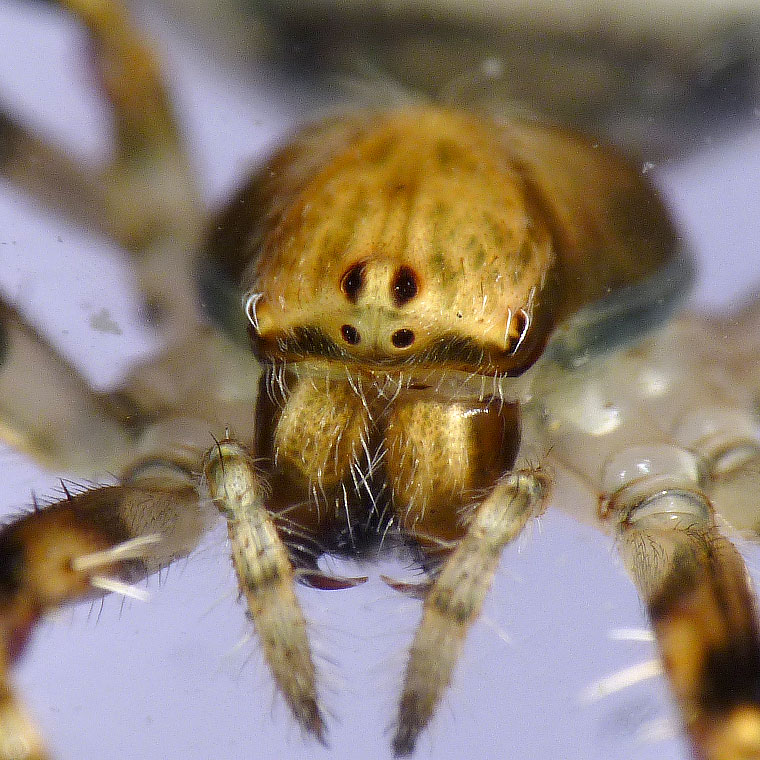
Female from above
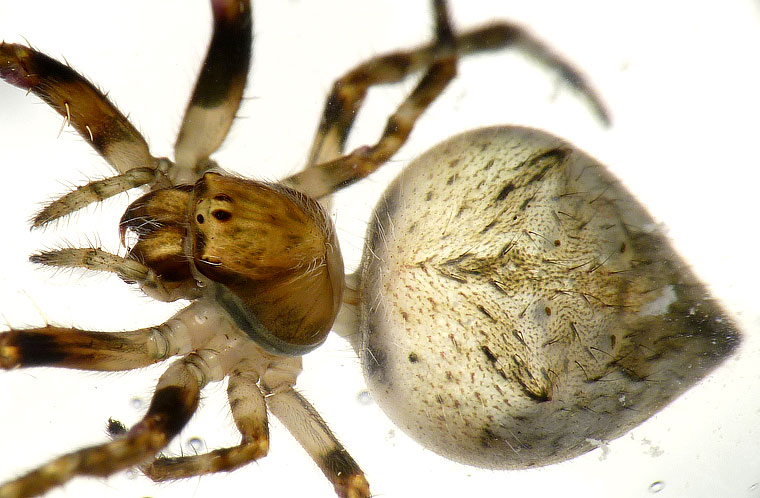
Female from above, oblique

Single posterior tubercle
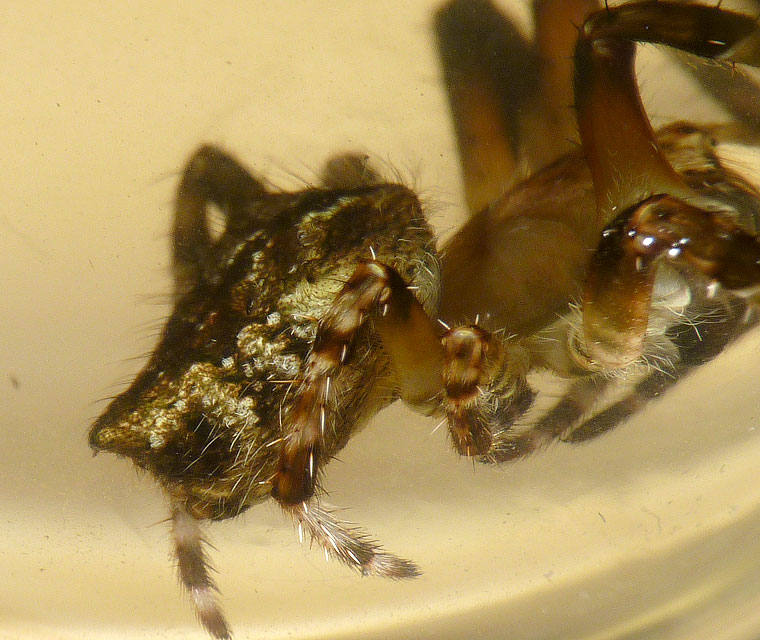
Female from above
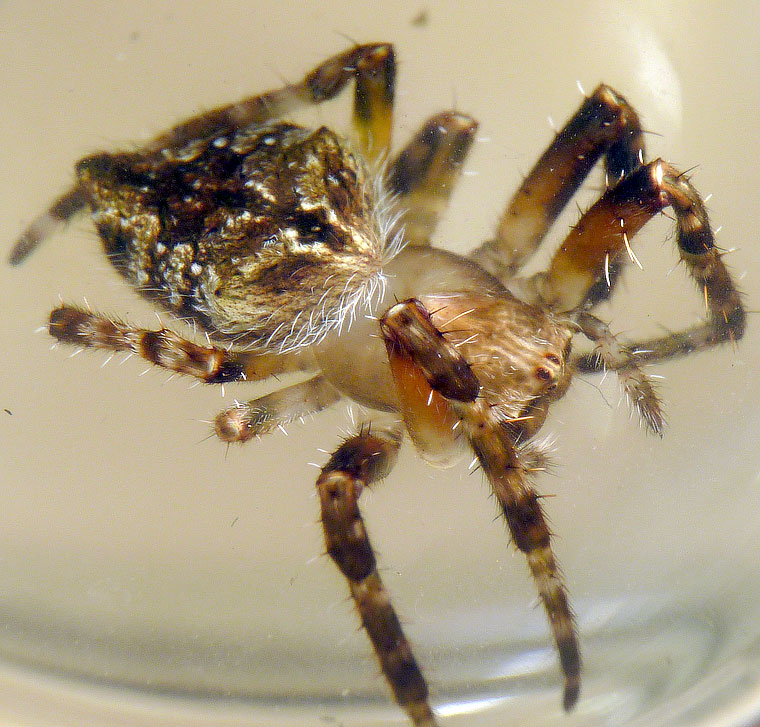
Female facing
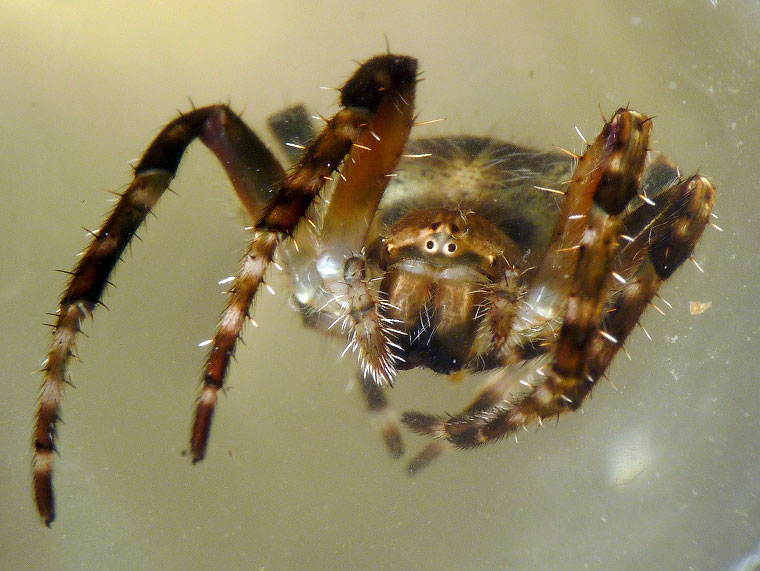
Female facing closeup
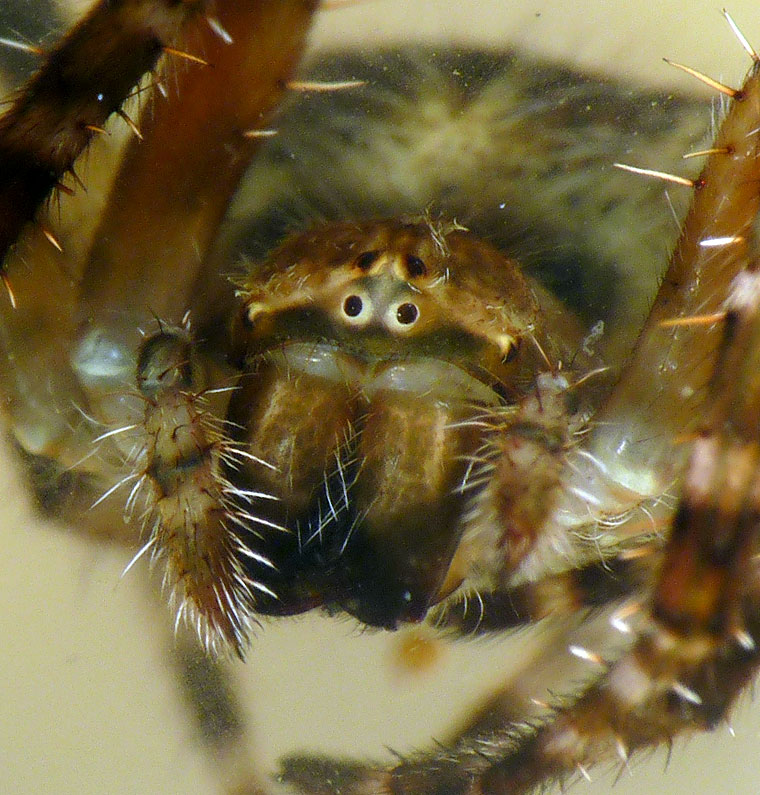
From above
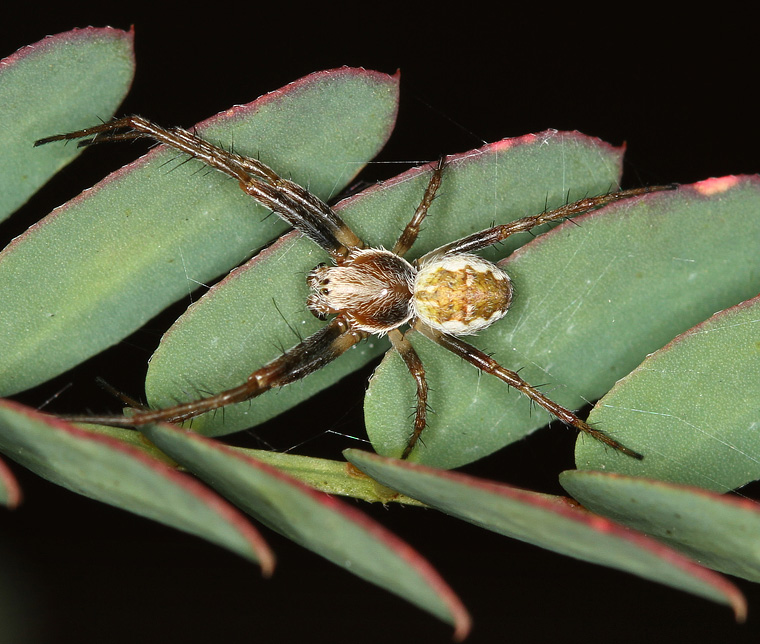
References
- Dondale 1966 - The spider fauna (Araneida) of deciduous orchards in the Australian Capital Territory

